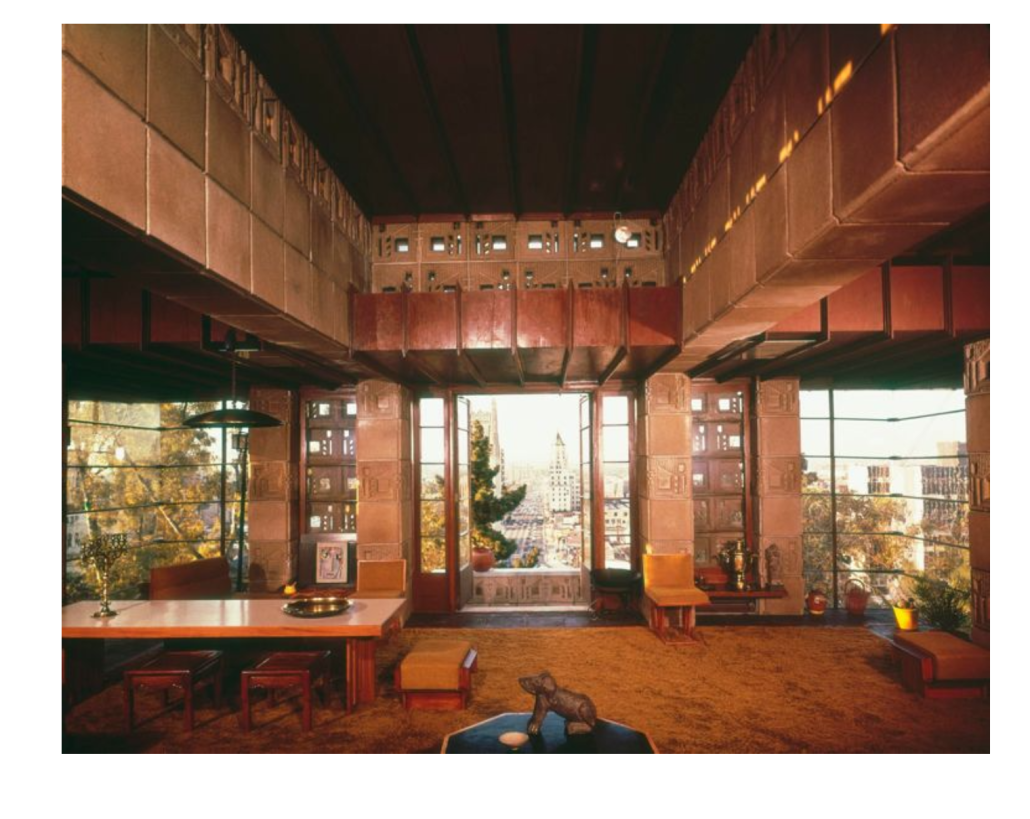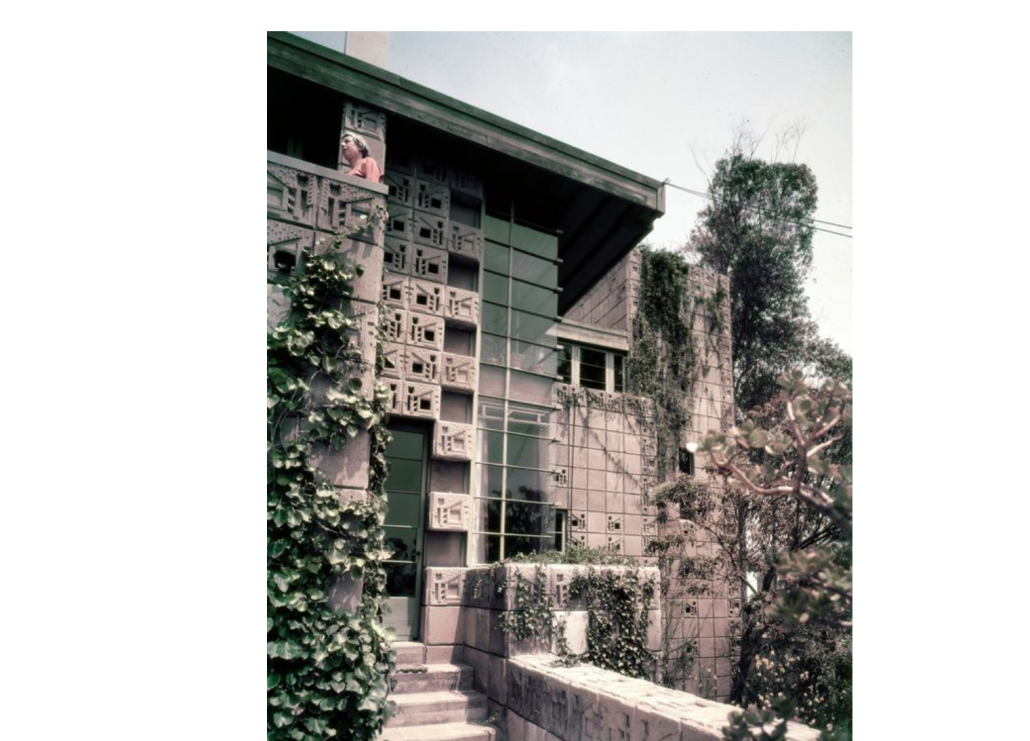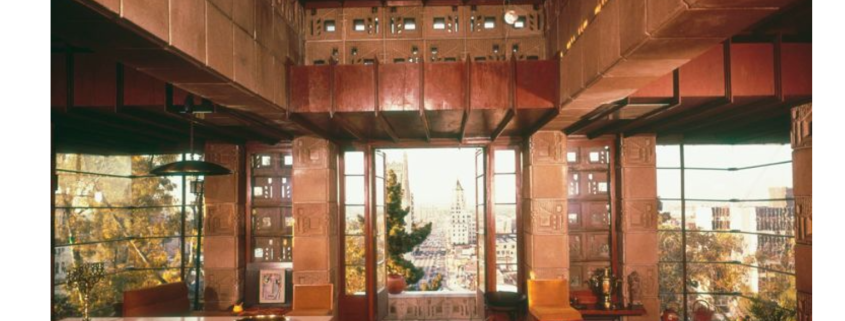USC sells Freeman House amid damage

In 1986, the USC School of Architecture inherited a historic mansion in Hollywood Hills after the passing of Harriet Press Freeman. The property, initially erected as a structural experiment by Frank Lloyd Wright in 1924, would later transform into an urban laboratory and a home for the avant-garde under the ownership of the Freemans.
Now, almost 100 years old, the home faces deteriorating structural integrity that demands attention. In light of the ongoing challenges in maintaining the home, USC finalized the sale of the Frank Lloyd Wright Freeman House Feb. 24.
The University ensured that the home’s rich history will be preserved under the ownership of Richard E. Weintraub, president and CEO of the Weintraub Real Estate Group, according to a USC statement sent to the Daily Trojan.
Harriet Freeman, the house’s first proprietor, was a dancer and leading figure in the avant-garde movement of the early 1920s. When she and her husband Sam Freeman commissioned Wright to build with textile blocks, experimental construction methods and innovative design elements, she intended to use the space as more than just a home — she would create a modern Bohemian center, a hotspot for the artistic and radical.
Colleagues in the avant-garde community, including choreographer Martha Graham, photographer Edward Weston and band leader Xavier Cuga, stayed with the Freemans, often putting on performances and showcasing their art. Eventually, the home became a political safe haven for those persecuted during the McCarthy era.
“During the McCarthy era [blacklists] when actors … suspected of being communists were losing their job or forced to go to Washington to testify, Harriet and Sam not only let their wives or families stay in the house, but she would do exercise and dance classes to keep them busy,” said Jeffery Chusid, associate professor of Architecture at Cornell University and author of “Saving Wright: The Freeman House and the Preservation of Meaning, Materials, and Modernity,” published in 2011.
In addition to actors and artists, the Freemans also housed and supported important political leaders and civil rights activists, including Congressman Augustus F. Hawkins, one of the first Black representatives in L.A.’s history.

The house’s rich history of art, politics and the avant-garde continued through the 20th century until the house was gifted to the University after Harriet Freeman’s passing in 1986. Since then, the University has used the home as an educational asset for the School of Architecture, permitting students and faculty to tour the house — or in Chusid’s case, live in it for over 13 years. Starting as a tenant in 1985 and later overseeing the home after Harriet’s death, Chusid studied the experimental architecture of the home while delving into its rich historical background in “Saving Wright”.
“Frank Lloyd Wright made a very rich environment full of experiences, like walking into rooms that have suddenly burst into light, walking down hallways that are very dark and dramatic,” Chusid said. “You could stand in the living room and tell what time of day it was and what day of the year it was because of the way the sunlight came through the clear stories and cast light on the walls.”
From its stunning exterior and the intricate glasswork to the gorgeous view of the City of Stars, this historic piece of architectural art was a transformational experience for those able to visit. However, with the passage of time came issues concerning the structural efficacy of the home that the University didn’t expect.
“The house was deteriorating, sometimes slowly and sometimes more quickly,” said Chusid, who used his experience in the home to embark on a path of preservation of architecture. “First the Whittier earthquake and then the Northridge earthquake.”
The unique construction of the property challenged USC’s ability to keep up with repairs.
“The school has never had the means to really maintain it the way it needed to be maintained,” said Kenneth Breisch, associate professor of architecture at USC. “It’s a difficult house … because of the earthquakes, but also, there’s a lot of water damage because the concrete blocks are very porous and rods are rusting — it needs a lot of tender loving care.”
Weintraub plans to fully renovate the home under the conditions of the preservation easement, said the Director of USC Museums Bethany Montagano, who has consulted on the Freeman House over the last year.
“The conservation easement, which will be held by the L.A. Conversancy, protects and preserves character defining features of the property in perpetuity,” the University wrote in a statement to the Daily Trojan. “With the addition of the Freeman House, the Conservancy now will have three textile block houses by either Frank Lloyd Wright or Lloyd Wright in its collection.”
The conditions of the sale also guarantee the public has access to the Freeman House four times a year. Proceeds from the sale will go toward educational programming for the USC School of Architecture.
“Maintaining academic access in partnership with the new owner who will restore the home is a benefit to everyone,” Montagano said. “The USC School of Architecture has worked arm in arm with national and regional experts to identify an owner who will fully restore, preserve and conserve the home and bring it into full use again.”

